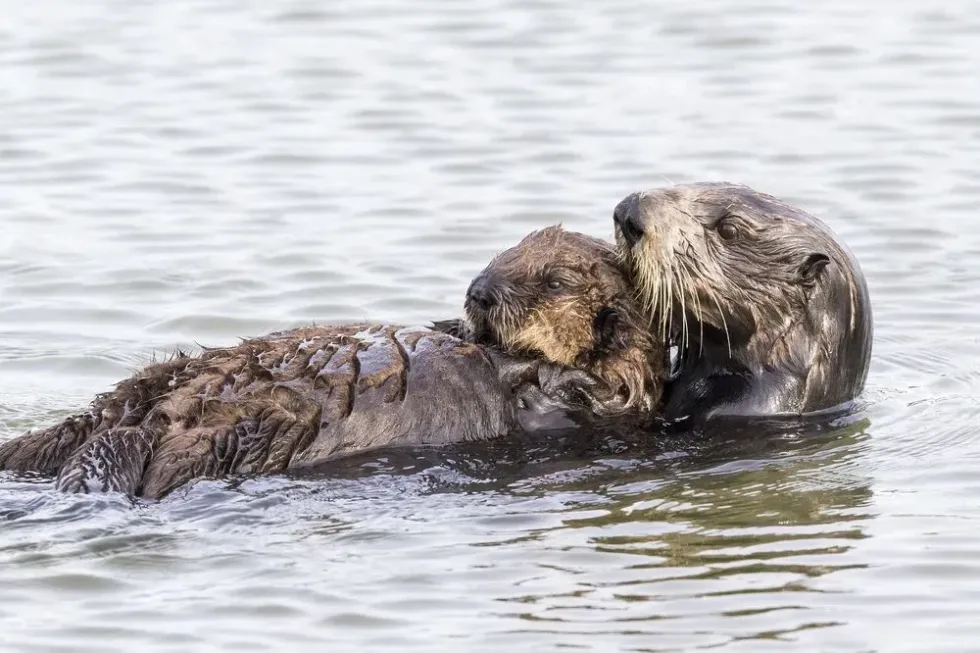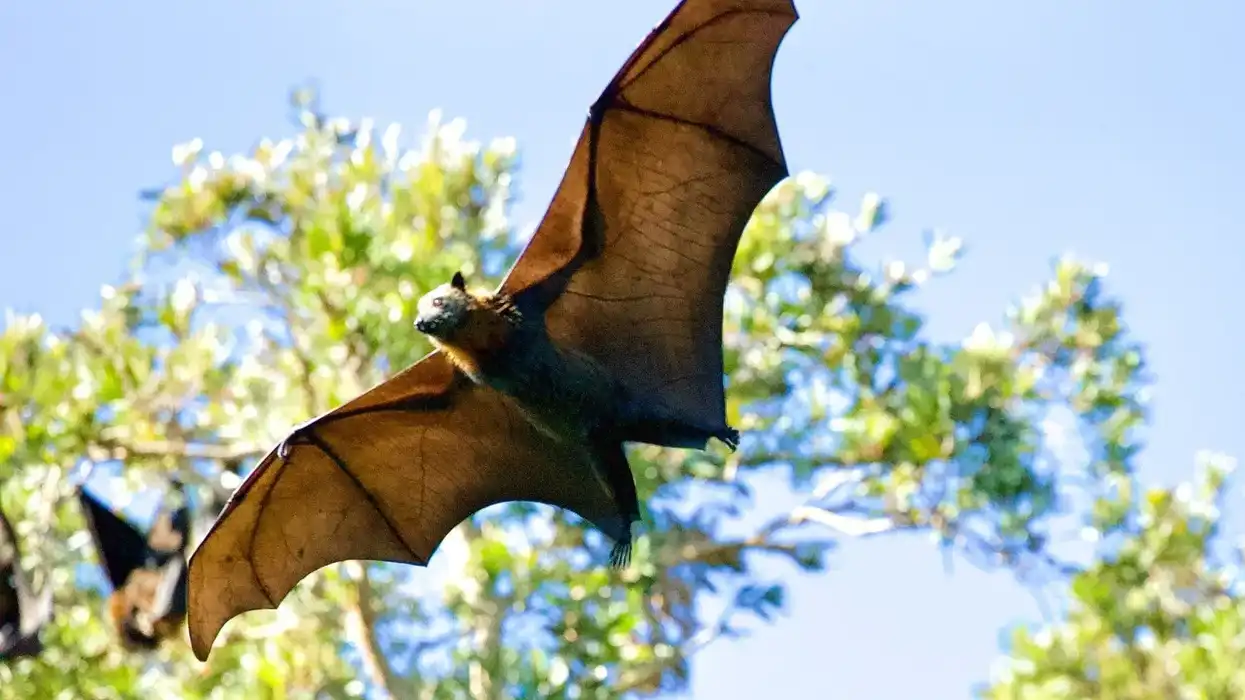Aren't otters extremely cute? It is time for you to know about the southern river otter (Lontra provocax), native to South America.
This species is mainly found in Chile and Argentina, and it lives in freshwater and marine environments that are covered with vegetation. Some otters also prefer to stay in terrestrial rocky coastal regions apart from their typical aquatic environment.
The southern river otter is covered in beautiful dark gray fur, and it has a slender body accompanied by a long tail and webbed feet. This medium-sized otter species has been pretty popular with people due to pelts made from its fur.
This has diminished the population acutely, and these otters are now endangered. This species mainly feeds on crustaceans and fishes while it tries to live peacefully away from the vicinity of humans.
Want to know more about this fascinating otter? Keep on reading to find out more interesting southern river otter facts! Also, check out our articles on the sea otter and the European otter.
Southern River Otter Interesting Facts
What type of animal is a southern river otter?
The southern river otter (Lontra provocax) is a type of otter native to South America.
What class of animal does a southern river otter belong to?
The southern river otter belongs to the class Mammalia, to the family Mustelidae, and to the genus Lontra. Its family, Mustelidae also contains animals like the badgers and ferrets.
How many southern river otters are there in the world?
The IUCN states that most of the research done on southern river otters doesn't actually include wild otters. This means it is not possible to note down the exact population of this species.
Where does a southern river otter live?
The southern river otter (Lontra provocax) is found in the Patagonian region present in Chile and Argentina.
What is a southern river otter's habitat?
Even though this animal is named the southern river otter, it can live in marine and freshwater environments and habitats. Some otters prefer to stay on land, especially while sleeping.
The southern river otter also prefers to have riparian vegetation in its freshwater habitats. You can even find the southern river otter living near slow-flowing canals with the least amount of disturbance.
Who do southern river otters live with?
Male southern river otters are usually solitary, and they only join up with the females during the breeding season. However, females often live in family groups with the pups. These young otters will stick to the family for a year before venturing off on their own.
How long does a southern river otter live?
When living in the wild, the average lifespan range for most of the population of otters is around three years. Most young southern river otters end up dying due to various reasons. Only a handful may live for a longer age, with some managing to live to be 10 years old.
How do they reproduce?
This species mainly breeds in the winter and spring months, and the females go through a gestation period of up to 12 months. The females of this species can delay the embryo's implantation to increase the fetus' ability to survive.
Most southern river otter females will give birth to one to two babies. The pups are dependent on the mother, and it takes about a month for their eyes to open.
After seven weeks, the pups begin to have solid food, and by four months, they will hunt independently from the family. The southern river otter pup will learn swimming when it is just three months old, and it may take three years to gain sexual maturity.
What is their conservation status?
According to the International Union for Conservation of Nature Red List, the southern river otter (Lontra provocax) is currently put under the status of being an Endangered species. It has been endangered due to illegal hunting because of its beautiful fur.
The population of this species is also on the decline due to habitat loss, construction on its habitats, and the presence of acute water pollution.
Southern River Otter Fun Facts
What do southern river otters look like?
When it comes to the appearance of an otter, it might be hard to differentiate between different species. However, the southern river otter (Lontra provocax) has a dark brown fur covering which is browner than other otter species.
The belly of this otter is often paler than its back. These river otters have become endangered due to their beautiful fur as people started hunting them for the pelt trade.
This is also a medium-sized otter species, making it much smaller than other marine or other river otters. The long and slender tail helps it to swim efficiently in marine and freshwater environments.
One of the best things about otters is their big expressive eyes and their cute diamond shape nose. Do not be doubtful about its strength, as the strong webbed feet with sharp claws help the species to hunt efficiently, even in rivers.

How cute are they?
Southern river otters (Lontra provocax) are extremely cute and their fur-covered bodies look quite cuddly.
How do they communicate?
Like other otter species, the southern river otter also relies on its scent glands present on the bottom of its tail. This scent helps it to communicate about its territory and to woo females during the breeding season.
Otters are also known for producing sounds like screams and growls for communication. While hunting for food, otters use their long whiskers to locate the animals even when the sun has gone down.
How big is a southern river otter?
The average length of southern river otters (Lontra provocax) is around 22.4-27.5 in (57-70 cm). This species also tends to have a long tail of 16 in (40 cm). Compared to the southern river otter, the Asian small-clawed otter has a length of 28.7-37.8 in (73-96 cm), making it slightly larger than the former species.
How fast can a southern river otter swim?
Even though we aren't able to find the exact swimming speed of this particular species, river otters, in general, swim at a speed of 9 mph (14 kph). These otters are also quite fast on land and may often reach a speed of up to 29 mph (47 kph).
How much does a southern river otter weigh?
The average weight of a southern river otter is around 11-22 lb (5-10 kg).
What are the male and female names of the species?
A male southern river otter is called a boar while a female is called a sow.
What would you call a baby southern river otter?
A baby southern river otter can be called a pup or a kitten.
What do they eat?
When it comes to the diet of a southern river otter, we still need to learn more about it. Some of the common things present on the menu include fish, crustaceans, mollusks, and even birds.
The otter's food consumption will depend on its habitat and the availability of food in that area. Those living in Chile like to feed on crustaceans, while the southern river otter from Argentina mainly feasts on crustaceans.
Are they poisonous?
No, southern river otters do not produce poison or venom and these otters aren't dangerous to human beings.
Would they make a good pet?
The southern river otter (Lontra provocax) is an endangered species, and it is illegal to keep it as a pet.
Did you know...
River otters are known for pooping on the side of river banks in deposits called latrines.
Apart from the southern river otter, some other species like the neotropical otter, the giant otter, and the marine otter are also found. In the US, northern river otters are found in different states, including Florida.
Do southern river otters sleep in the water?
Rather than sleeping in water, river otters prefer to sleep on land. It generally hunts out underground dens or shelters present on the ground. Sometimes these otters will also get into the dens of foxes, rabbits, or badgers to relax for a bit.
Are southern river otters aggressive?
River otters, especially the southern river otter, aren't necessarily aggressive. However, it can attack if is in an irritating situation. It's better to be careful if you come across these adorable beings.
Here at Kidadl, we have carefully created lots of interesting family-friendly animal facts for everyone to discover! Learn more about some other mammals from our Alpine dachsbracke facts and Risso’s dolphin facts pages.
You can even occupy yourself at home by coloring in one of our free printable southern river otter coloring pages.










